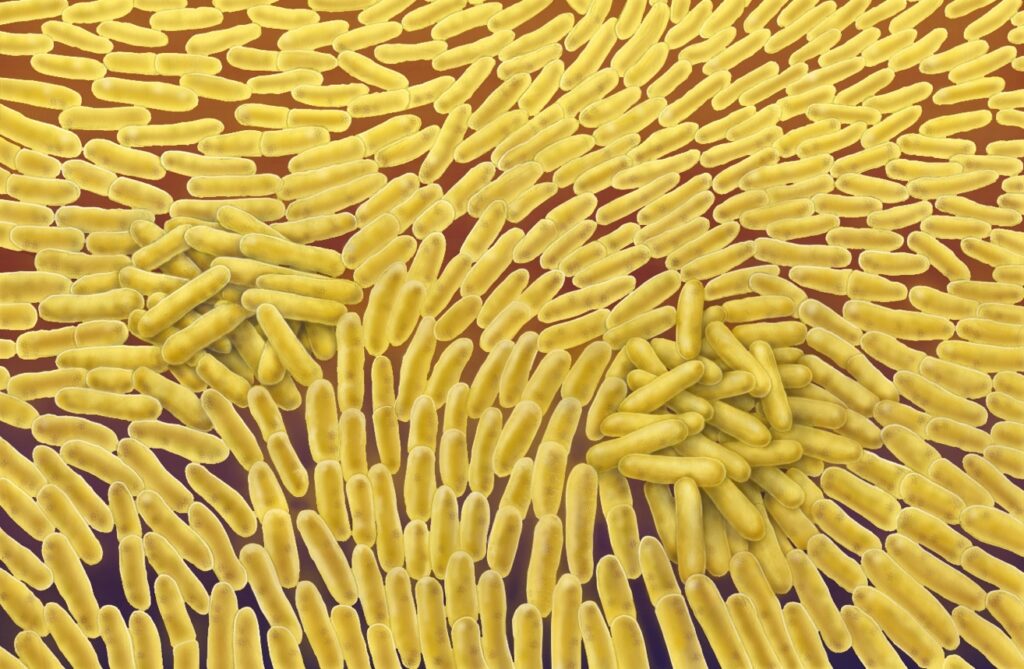Tilt-induced polar order and topological defects in growing bacterial populations
News 2022/12/22
Bacteria often attach to solid surfaces and form three-dimensional aggregates called biofilms. Understanding and controlling the process of biofilm formation is important because it can cause, e.g., bacterial infections in medical devices and corrosion in industry. In general, when bacteria grow on a solid surface, they form microcolonies that initially grow two-dimensionally on the surface, and then they switch to three-dimensional growth when bacteria become dense enough. Conventionally, this process has been considered from a mechanical point of view.
Takuro Shimaya, a graduate student (at the time of the research) and Kazumasa Takeuchi, an associate professor at the Department of Physics, University of Tokyo, observed the initial process of three-dimensional growth of colonies that uniformly cover a solid surface. Using non-motile E. coli, they found that the orientation order of bacterial cells affects the three-dimensional growth.
Many bacteria, such as E. coli, are rod-shaped, and when densely packed together, the rod orientation is aligned. However, in some places, points of misorientation may exist, which are known as "topological defects".
This study revealed that colonies are slightly raised at the points of topological defects in the bottom layer. This is attributed to the finding that defects attract surrounding cells. The mechanism of cell attraction has also been successfully explained on the basis of an ordering in the way cells are tilted with respect to the substrate -- what the authors call the poler ordering. It is hoped that a better understanding of the physical laws underlying bacterial colony growth will bring us closer to understanding and controlling the process of biofilm formation.
See below for more information.
- Aritcle URL : https://academic.oup.com/pnasnexus/article/1/5/pgac269/6948003?login=false
- Takeuchi Lab.: https://lab.kaztake.org/index.html



